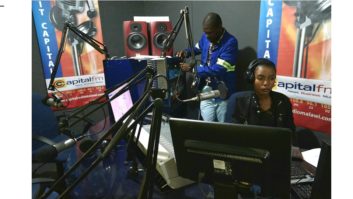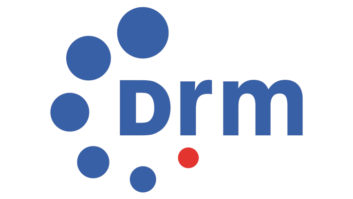There is good news from Africa. A small township station in South Africa has undertaken an innovative Digital Radio Mondiale trial, proving that the standard can coexist with FM stations in the same band, thus maximizing the spectrum and allowing the possible insertion of another 50 stations without any interference in the crowded FM space of Johannesburg.
DRM can operate in all bands above and below 30 MHz and has been successfully tested on medium wave by another community station, Radio Pulpit in Pretoria, in 2015.
THE TEST
DRM in VHF bands, for local coverage (also known as DRM+ or DRM mode E), had never been tested on the African continent. But last year, the South African regulator, ICASA, granted a test license to the Westbury Community Development Centre Trust (WECODEC) for eight months, effective from March 3, 2017. The license holder was Kofifi FM 97.2, a community radio station located in Westbury (on 101.25 MHz). The BBC World Service, Fraunhofer Institute for Integrated Circuits, Starwaves, Thembeka and Associates and other South African entities and members of the DRM Consortium collaborated in the trial.
The trial’s main technical goal was to test the coverage delivered by DRM (in Band II) and understand if the new digital signal causes interference.
One of the principle objectives of the initial development of DRM in mode E was the possibility of a close placement of the DRM signal to an FM signal so that it can be flexibly configured depending on the existing use of spectrum. In this way, DRM mode E may be introduced into the FM frequency bands.

Fig. 1 illustrates how the DRM signal can be placed very close above or below the existing FM signal. To guarantee the protection levels and audio quality of the FM signal, the carrier frequency distance Δf and the power level difference ΔP of the FM and the DRM+ signals must be planned accordingly. Δf can be chosen according to a 50 kHz channel raster. Δf >= 150 kHz is recommended. ΔP can be varied flexibly; however, a ΔP > 20dB is recommended for the minimum Δf = 150kHz according to previous evaluations.

Fig. 2 confirms that there was no space for another FM station in Johannesburg except for perhaps one or two low-power community radio stations with a very limited coverage area.
However, if one gap, as the one that identified during the trial, would work for DRM without any interference, this would prove that there could be suddenly plenty of available digital spectrum in the FM Band, namely 16 allocations as shown (as thin red columns) in the figure below.

And here is how it worked. The frequency 101.25 MHz is situated between 101.0MHz (RSG Pretoria, 33 kW ERP, distance: 56 km) and 101.5MHz (RSG Johannesburg, 38 kW, 3 km distance) with a delta f of each 250 kHz as shown in Fig. 4.

Considering there are at least three sound services per DRM signal, in this scenario up to 48 additional sound services could be added to the current FM spectrum in Johannesburg. If going down to 200 kHz@-10dB this number would increase even more.
The trial operated under real live conditions, whereby a community radio station was trying to squeeze its digital signal into Johannesburg’s crowded FM spectrum, from its small antenna on a hospital roof. For the Johannesburg WECODEC trial in Band II a Nautel 2.5 kW transmitter was used, operating at 175 W and 275 W resulting in an estimated ERP of 500 to 1000 W on a stacked four vertical dipole antenna located at Rahima Moosa Hospital in Coronationville.
The approximate antenna height was 70 meters above ground level. Audio decoding was possible at almost all predicted areas and beyond and showed a similar or better behavior (depending on the terrain) than FM audio reception of the analog signal transmitted from the same site.
Power consumption per channel (in DRM up to three channels can be transmitted on one single frequency bandwidth of 96 kHz) was much lower than for FM: 12 times lower for mobile reception and 30 times for fixed reception.
Another way to put it is that during the trial it was also demonstrated that the adjacent channel RSG on 101.5 MHz transmitting at 33 kW ERP (18 dB stronger) did not impact the reception of the signal even in difficult indoor scenarios. Consequently, a separation of 250 kHz between an FM and a DRM signal in the FM Band is sufficient in case of mixed spectrum utilization.
The trial measurements, taken in eight radial directions and using additional mobile measurement excursions with both professional and (pre-) consumer receiver equipment, confirmed the efficient use of spectrum. Another main finding was that both adjacent channels RSG Pretoria on 101 MHz and RSG Brixton on 101.5 MHz did not get interference from the DRM transmissions.
Therefore, the WECODEC DRM trial successfully demonstrated that by its compact design and tiny bandwidth allocation, DRM mode E (DRM+) is a suitable technology for a community radio station able to implement, operate and control this type of a digital sound broadcasting service, all on its own, if necessary.
BENEFITS
The benefits for the community, besides better sound quality, are much lower operating costs (less power consumption, less maintenance on lower power transmission equipment, less replacement costs, in case of damage or loss), multilingual programs, free digital information systems (Journaline: comparable with social media but free of data charge) and content development programs to benefit youth, the disabled and other categories. The trial also evaluated the socio-economic benefits of DRM for the Westbury community and South Africa.
Alongside the three audio services using the latest xHE-AAC audio codec, various text and data services, including Journaline advanced text, were also broadcast and successfully decoded with both professional and consumer receivers. Bit rates as low as 16 kbps per audio service provided good stereo quality and prove that, according to the official WECODEC report that “this technology is the most spectrum efficient solution currently on the market that will benefit the communities, have a huge impact on the licensing framework and will create jobs in South Africa.”
The WECODEC trial also demonstrated how digital radio can respond to one of the key requirements of the South African legislation — universal access to information and education [ECA Act] for all citizens.


The WECODEC trial, which has now been extended by the regulator until the end of 2018, demonstrates the efficiency of a completely free-to-air digital information service being broadcast by a community in South Africa (and whole of Africa). It has proven that universal access to information is possible without the use of broadband internet and expensive airtime data.
The current trial aims to achieve technology transfer and show how DRM can create new content. Additional sound and multimedia services will open opportunities for more educational programs, targeted programs for specific and large communities like the 11 million people with disabilities, interactive services (e.g. employment), weather and traffic information, emergency warning systems and many other benefits for citizens and communities.
[Read: Digital Radio Mondiale — An Update From India]
On Sept. 28, the Department of Communications published a policy directive regarding the introduction of digital sound broadcasting in the country. The statement recommends DRM for large coverage area (DRM30) in medium wave and DRM for local coverage in Band I and Band II (FM) or DRM+. “Such can be used to complement analogue FM sound services in the short to medium term and replace analogue service in the long term,” it stated in the report.






